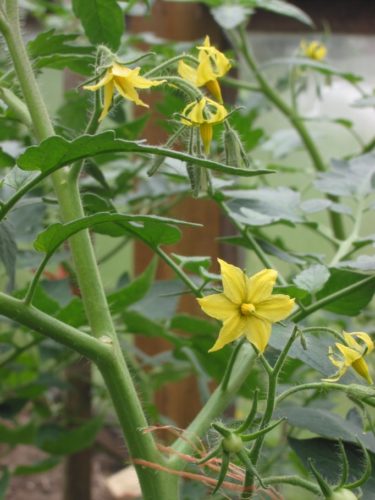There are tomatoes for indoor and outdoor cultivation.
You are viewing the mobile-adapted version of the page.
The one for tablets, laptop and desktop also provides general information, such as origin and cultivation.
Tomatoes – belong to the nightshade family (Solanaceae). Sow tomatoes in March for the greenhouse or on the warm windowsill. Once the plantlets are large enough to repot, put each in its own pot for the greenhouse or conservatory. There are also tomatoes for outdoor cultivation.
Pre-sow in greenhouse or warm window sill in March and in mid-May, in late spring or early summer, tomato plants can go outside. Place tomatoes in a sunny and sheltered spot in the garden. A shelter helps against the rain, because tomatoes, like potatoes, are very sensitive to Phytophthora
Once the tomatoes begin to color, they should be tied up and side shoots in the leaf axils should be removed (Pinching).
Tomatoes can be forced to flower faster by being sparse with watering for some time after transplanting. This causes them to flower earlier, and the earlier the flowering, the earlier the harvest. However, this method of forcing somewhat increases the chances of Blossom end rot, because precisely regularity (same time and same amount) of watering helps prevent Blossom end rot and cracking of the almost ripe tomatoes.
Tomatoes, like the potato and aubergine, belong to the nightshade family. Tomato plants also contain tomatine (sister of solanine), except for ripe tomatoes.
Bugs
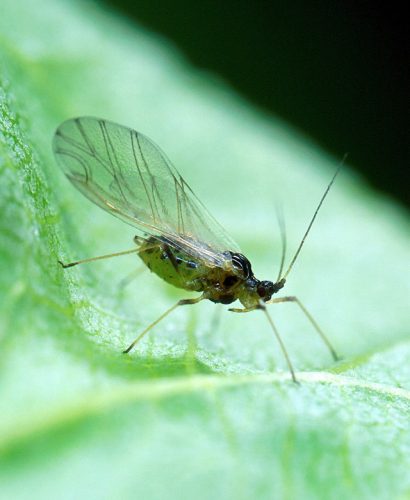
Curled leaves; in some places there is an aph
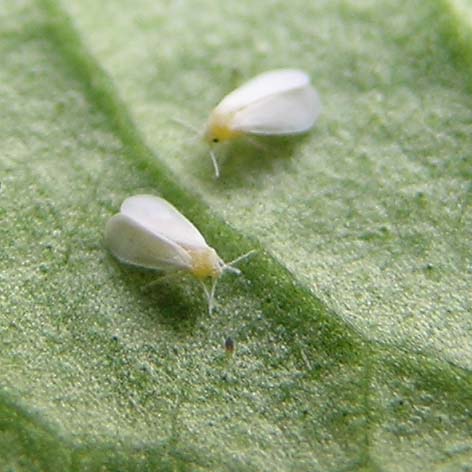
Leaf turns yellow and bumpy; eggs on the underside of the leaf: Greenhouse whitefly (Trialeurodes vaporariorum).
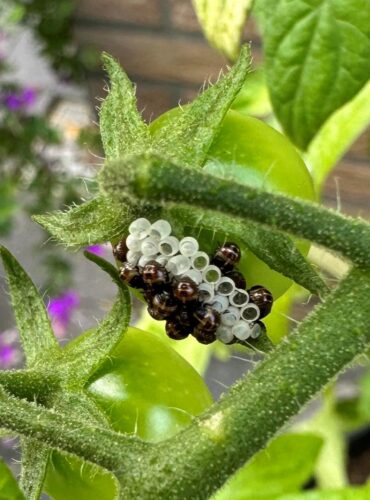
Beet
Fungi & diseases
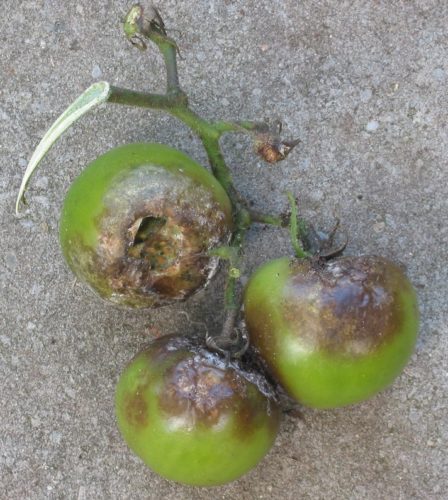
Brown spots on leaves and stems: Late blight (Phytophthora).
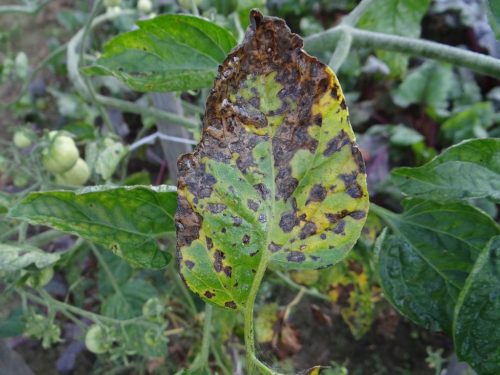
Small brown spots on the leaf, growing into large spots, after which the leaf yellows, curls and dies: Alternaria (Altenaria alternata).
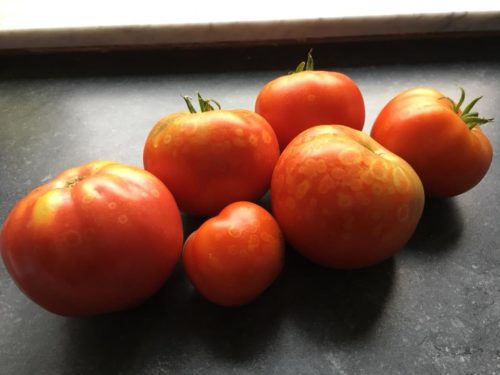
Incipient gray mold (Botrytis ssp.) on tomatoes.
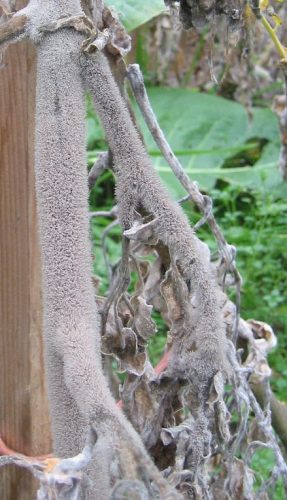
Tomato plant covered by gray fungal fluff: gray mold (Bo
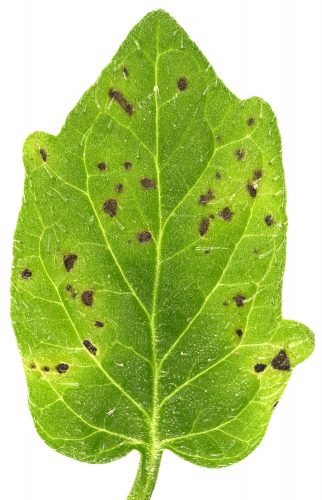
Brown spots develop on the leaves, after which leaves fall off prematurely: bacterial canker (Pseudomonas syringae).
Leaves at the end of a stem wilt, with the leaf not curling or coiling. Then more top leaves follow. A cut affected stem shows bacterial slime: Ralstonia solanacearum.
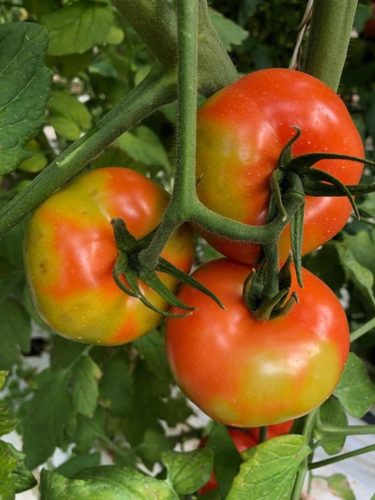
Dots and yellow spots on tomatoes, mosaic pattern on new leaves in plant head and young shoots, followed by mosaic pattern on tomatoes: Tomato Brown Rugose Fruit Virus (ToBRFV).
Other
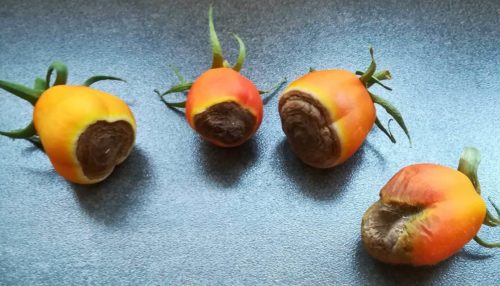
Brown, dry spots on the underside of the tomato: Blossom end rot due to unbalanced nutrition.
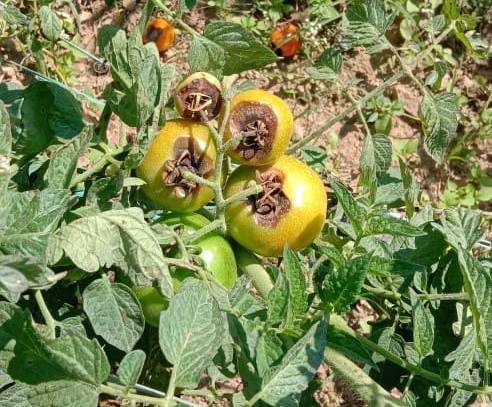
Dilated, rotten spots on the top or bottom of tomatoes: Blossom end rot, caused by calcium deficiency combined with too little water.
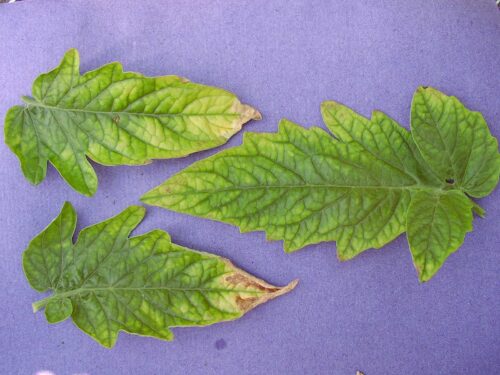
If the pH is too high or too low, the growth points die: a deficiency of the trace element boron.
Tomatoes show water spots – water the plants at the roots.
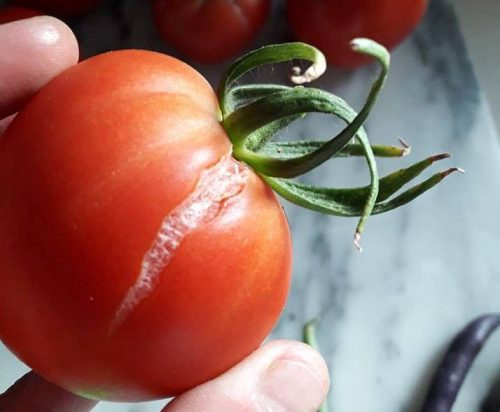
Tomatoes tear in final stage of ripening: irregular excess water (rain).
Leaf stalks grow from leaf axils: offshoots inadequately removed – pinching.
Leaves turn from dark green to reddish-brown and the leaf edges yellow. The tomatoes no longer turn red and the margins of new leaves turn yellow: potassium deficiency.
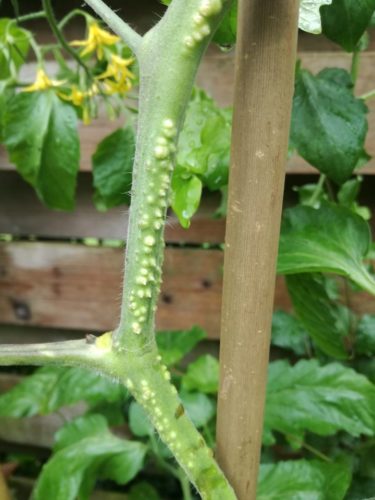
Root growth occurs on the stems: this is quite normal in some types of tomato plants. If you put such a stem with root formation under the soil or in a cup of water, the roots just grow and a new plant is created.
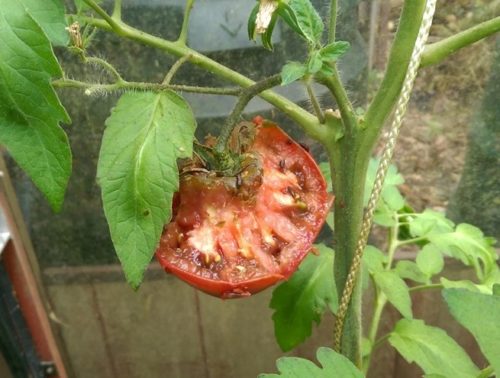
Mice sometimes eat tomatoes. They can easily climb up along the stem. Lagging mouse droppings betray their presence.
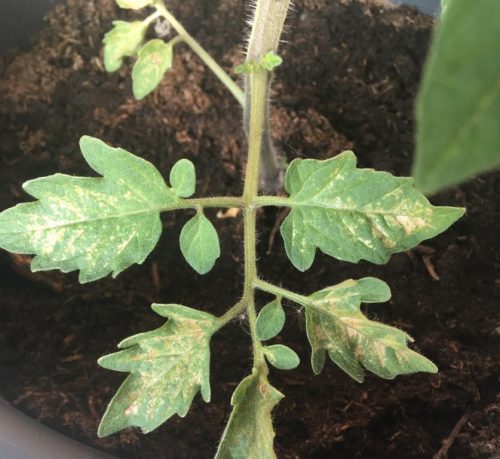
Yellow spots on young leaves: over-fertilization due to too rich (potting) soil. Water frequently to prevent burning; plant recovers during season. Fertilizing the mature plant is unnecessary.
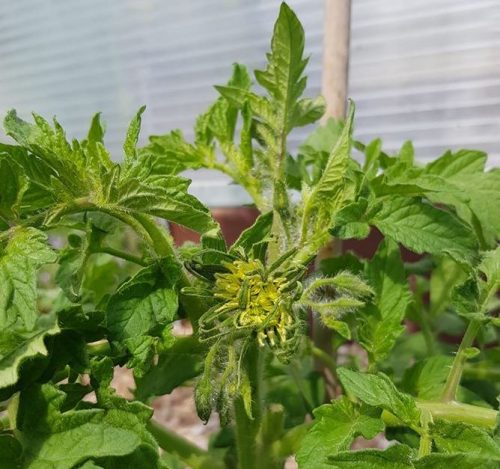
Curiously shaped flower at the top of the tomato plant: peloric top flower. Normal potato flowers have five intertwined petals. Peloric flowers have eight to 13 fused petals. Sometimes these unusual flowers arise; in foxglove it is a regular occurrence. Can’t hurt.
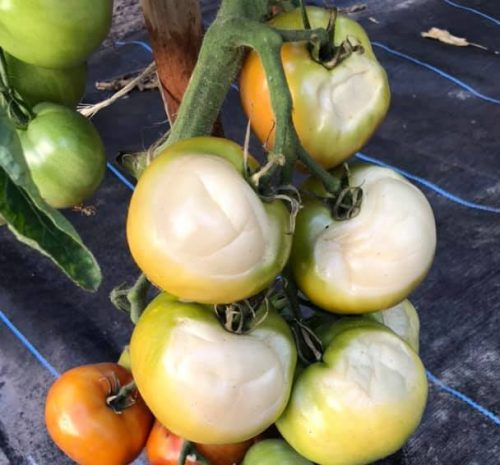
Tomatoes not covered easily develop sunburn during a heat wave. Prevent this by shielding the tomatoes in time with vitrage or with an umbrella. Do not cut away the leaves, as they will give shade. Water liberally. Remove the burnt fruit.
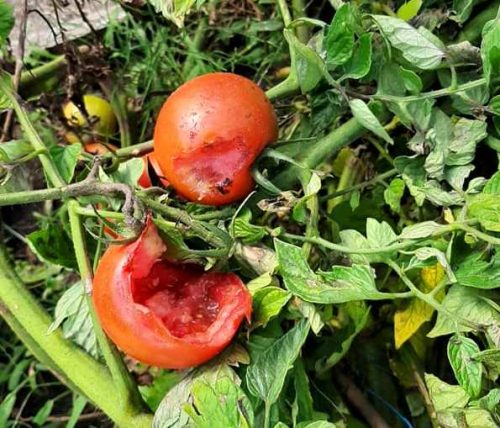
Rats can do substantial damage to ripening tomatoes.

